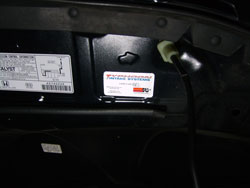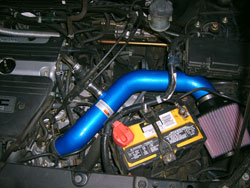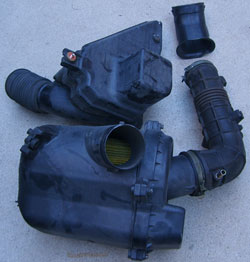K&N Typhoon Intake System Breathes New Life into Honda Element
- 28 ene 2011
We live at the beach, have dogs, ride bikes and move stuff, and our Element, with the "clamshell" rear doors that pivot backward a full 90 degrees, has been up to every task we've asked of it. A fun fact is that in 2007, the Honda Element won the Dogcars.com's "Dog Car of the Year." How many cars can make that claim? Our Element only recently hit 70k on the odometer, which is pretty much the break-in period for Honda's, so there's no reason to replace it anytime soon. And in fact, 2011 is the last year that Honda will be producing the Element, and with that comes the possibility that it may endure with the same enthusiasm as the ‘60's VW, becoming the love wagon of the 21st century in essence. Who knows, maybe someday we'll even stick some of those flower decals all over it, and hang curtains on the windows?
Over the years there has basically only been one model generation of the Element, and the only significant change, other than switching for plastic to metal body panels, has been a slight increase in horsepower. Enter the K&N Intake System. Having written hundreds of stories for K&N, about race teams and regular consumers around the globe that wouldn't even consider using anything but K&N products on their vehicles, you'd think I would have caught a clue earlier. Honesty, it's almost like I believed guaranteed horsepower gains only happened to other people. It wasn't until I was recently doing an oil change and screwing on my K&N oil filter that I had a huge "duh" moment. Yes, I too was worthy of more horsepower. K&N can confidently declare guaranteed horsepower in every intake kit they sell because they actually test it first. Every intake kit is tested on a dynamometer. K&N measures actual real-world horsepower, not what's on the window sticker when you purchase your car. In order to make horsepower measurements appear more impressive they are often recorded at the engine. However, there's generally a loss of horsepower through the drive train, so what you read on the sticker is not what your wheels are putting on the road. On one of K&N's Dynojet dynamometers, running at 4800 rpm, my new intake showed a nifty added increase of just under seven horsepower. I'll take that any day. That puts our slightly long-in-the-tooth Element right back with its younger siblings. Replacing the Element's unnecessarily bulky air cleaner assembly, inlet tubes and resonator box, is a piece of cake for the moderately handy do-it-yourselfer. The step-by-step instructions provided with the intake come with pictures making then easy to follow. And you won't believe how much the new K&N Typhoon Intake System opens up your engine compartment. The OEM (original equipment manufacturer) air cleaner assembly was designed with aesthetics as a priority, not functionality. That's not smack-talk about Honda, or any other manufacturer, when you open the hood of a new car you'd much rather see it beefy-full from stern to bow. Yet, it's that very design consideration that's cuts into its true special purpose - delivering oxygen into the combustion cycle. Short of an oxygen tank injection, nothing sucks more air into your engine than the Typhoon. If you're a little iffy about your mechanical skills, or simply don't have time, your auto care provider should require no more than 90 minutes for the install, so don't let them tell you it was an all day job. My wife and I have been running casual gas mileage tests on the Element since installing the intake, it appears we may actually be getting a mile or two more mpgs too, but it's tough to tell. The thing is we don't lollygag around town like we used to. It is after all tough to resist the sound of the Typhoon breathing heaping-helpings of air when we press down on the accelerator. - Olaf Wolff Find K&N products for your vehicle using the K&N application search then use the K&N dealer search to find a K&N dealer in your part of the world. |












